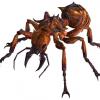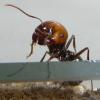I received this Pheidole megacephala colony from Vendayn about two weeks ago. For the first couple days, the containers that contained the colony sat on my floor in a cardboard box. I then moved the containers into a large bin with the sides completely covered in fluon. I put a hot light on the main container to dry it out, and convince them to move into the test tube I had prepared for them.
I didn't notice much activity unless I put some food in there, and even then I would only see a few of them coming out to eat. Each day though, I was finding a few more dead workers laying in the bottom of the bin than the day before. I know this species is pretty scrawny and hairy, but something about some of them looked almost like they had some really bad hairdos, and all pretty unique to one another too. I didn't think much of it and mainly just left them alone.
Two weeks later, I came home from work to find hundreds of them dead on the bottom of the bin.
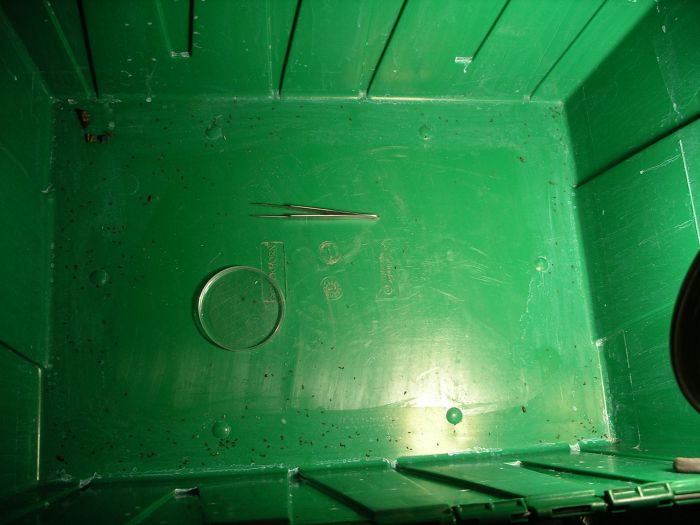
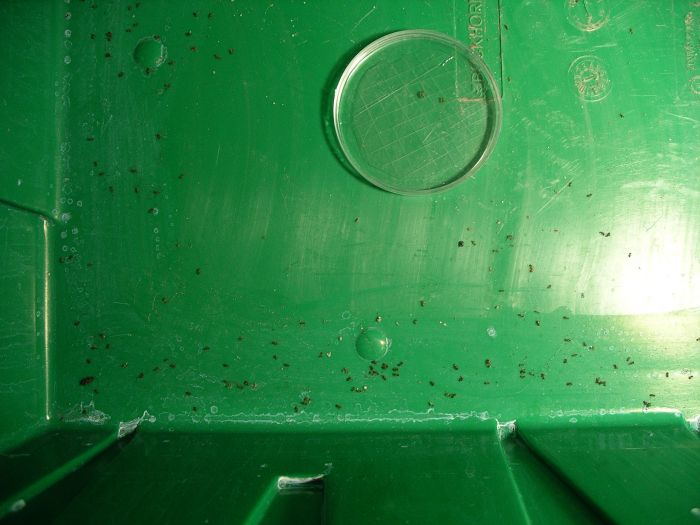
At first I was pretty pissed off thinking I have another mystery mass die-off on my hands. There were still a couple of them running around very erratically, and with what looked like some of the worst "hairdos" I had seen yet, or at least something about them made them look almost mutilated. I of course figured I might be able to get to the bottom of this with a quick look under the microscope.
Well sure enough, this mystery was solved. They had been slaughtered by tens of thousands of parasitic mites. Every dead ant in the bin was covered with these mites.
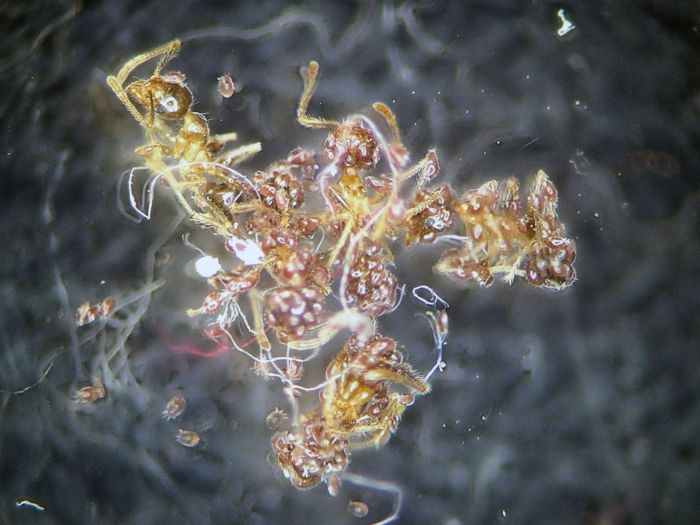
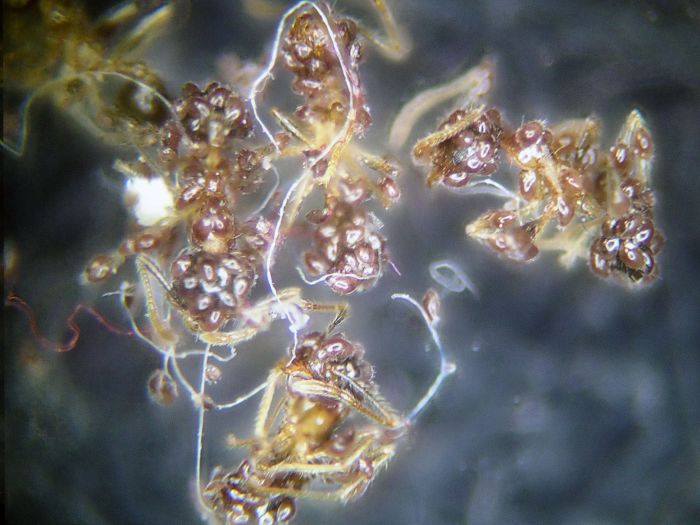
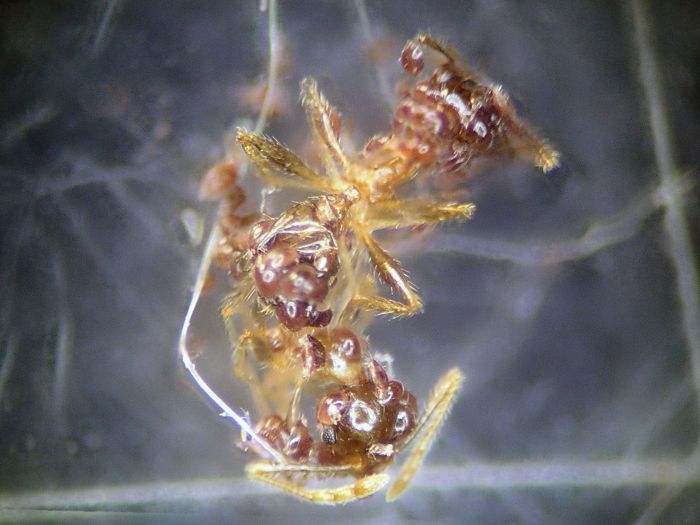
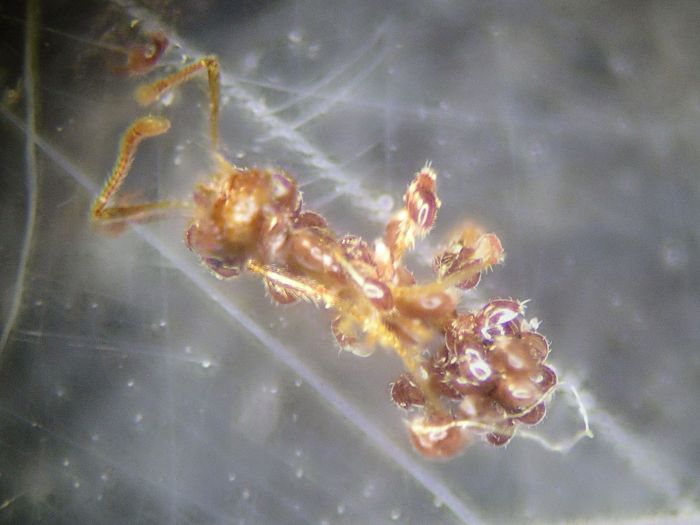
There were even a few other insects in there covered in these mites too, one being a little jumping spider. These were definitely the smallest mites I have ever seen. Usually I can pretty easily recognize a mite with my naked eyes. Most of those I see are much larger, non-parasitic mites like spider mites or compost mites, but these were those turtle looking mites that almost look like super thin, empty turtle shells with really tiny legs.
Obviously I got a little panicked at first, thinking my whole apartment could be infested, but then remembered I had fluon on the sides and hoped that was able to stop these things from climbing out. I moved everything into my bathtub for the time being, and prepared a very small transparent container with fluon on the sides and dropped a few of the dead ants in it. I watched it carefully and could see these mites were terrible climbers. They could hardly climb smooth surfaces that weren't even coated with fluon. As for the fluon surfaces, they couldn't even come close, just immediately falling down and ending up on their backs unable to move. This was a huge relief. I put some of them in alcohol and it took a while, but eventually killed them. I tried putting a few in a bleach/water mixture, but didn't wait long enough to see them die; they seemed to just keep walking around as if it was hardly affecting them.
Using alcohol and bleach, I finally killed everything off, including whatever was left of the colony (as if any of them were even going to survive).
Here's a video I shot of the mites still feeding on the dead ants.
The fact they were such bad climbers wasn't the only good news, when I got home from work today, I took a look at the small container of them, and they were all dead and slightly curled up as if they had dried out. I'm guessing these either have an extremely short life-span, or they can't go for more than a day without water or food. Either way that's very good news. I assumed they had to have some sort of vulnerability, otherwise after seeing this, you'd think they would have eradicated every insect out there.









